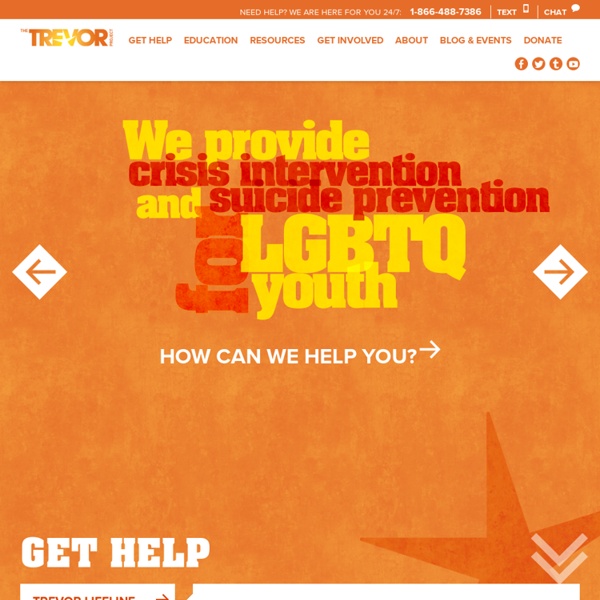



The Writer’s Forensics Blog Google Chrome Extensions Homosexuality and the Bible Preventing Suicide Learn the signs, the facts, and how you can help prevent suicide. Each one of us can play a vital role in ensuring that all young people, regardless of their sexual orientation or gender identity, are provided with safe, accepting and supportive environments at home, at school and in their communities. As a parent or educator, you can be a lifeguard for your children or students by understanding the warning signs and risk factors of suicide and letting the youth in your life know that support is always available if they need it. The Warning Signs The Risk Factors Facts About Suicide How You Can Help Reporting About Suicide Talking about Suicide and LGBTQ Populations
Association of Charitable Foundations, ACF : Uk association supporting grantmaking trusts and charitable foundations Recherche avancée Google Scholar Azerbaijan Gay Activist Commits Suicide Isa Shakhmarli killed himself this week, apparently by hanging with a rainbow flag. Mourners at the grave of Azerbaijan gay activist Isa Shakhmarli A gay rights activist in the former Soviet republic of Azerbaijan was found dead this week, an apparent suicide by hanging, using a rainbow flag. Isa Shakhmarli, 20, chairman of Azerbaijan Free LGBT, was found dead Wednesday in his apartment in the city of Baku, reports Agence France-Presse. A video recorded at the scene showed a torn rainbow flag hanging from the ceiling as emergency medical personnel tried unsuccessfully to resuscitate Shakhmarli, according to AFP. Homosexuality remains stigmatized in the largely Muslim nation of Azerbaijan, as in many former Soviet republics, even though it has been decriminalized. Watch a video of Shakhmarli’s friends mourning him below, via Radio Free Europe.
Work From Home | Make Money Schemes | Business Opportunity in UK Download Claroline 11-Yr-Old Bullied Brony Fighting For Life After Suicide Attempt Eleven-year-old Michael Morones is a passionate boy. He idolizes his Uncle Jimmy, who is a proud member of the Bronies. The term Brony is a portmanteau that refers to fanboys of My Little Pony (“bro ponies”), although girls can be Bronies too. Michael’s favorite character is Pinkie Pie, a hyper excitable pony. A group of his peers at school have been taunting and bullying the boy about his fandom. Nobody stood up for Michael, but he seemed to be doing okay. In addition to his religion and his love of My Little Pony, Michael has other keen interests. “A few weeks ago, Michael told us he wanted to take the bus straight home after school, instead of going to the boys and girls club with the other kids,” Suttle explained, “and at the time, we thought it was because he wanted a chance to have the TV to himself for a couple hours before his brothers came home.“ Michael has a 13-year-old brother and a 5-year-old brother. On Thursday, January 23, Michael had another rough day at school.
Solar Panels - Photovoltaic Solar Panels & Solar Water Heating Panels Gay People In Homophobic Regions Die Younger Than Those In Accepting Communities: Study Researchers of what's been deemed as "the first study to look at the consequences of anti-gay prejudice for mortality" have discovered that lesbian, gay and bisexual people living in less open-minded communities have a shorter life expectancy. The Columbia University study, which was published online in the Social Science & Medicine journal, found that lesbian, gay and bisexual people in communities with high levels of anti-gay prejudice lived an average of 12 years less than their counterparts in more accepting environments. He added, "In fact, our results for prejudice were comparable to life expectancy differences that have been observed between individuals with and without a high school education." The survey examined data over a decade-long period, from 1988 to 2008. As The Advocate and other publications have pointed out, many of the deaths in the survey were attributed to suicide and cardiovascular diseases in the high-prejudice communities.
AECB Home Page -